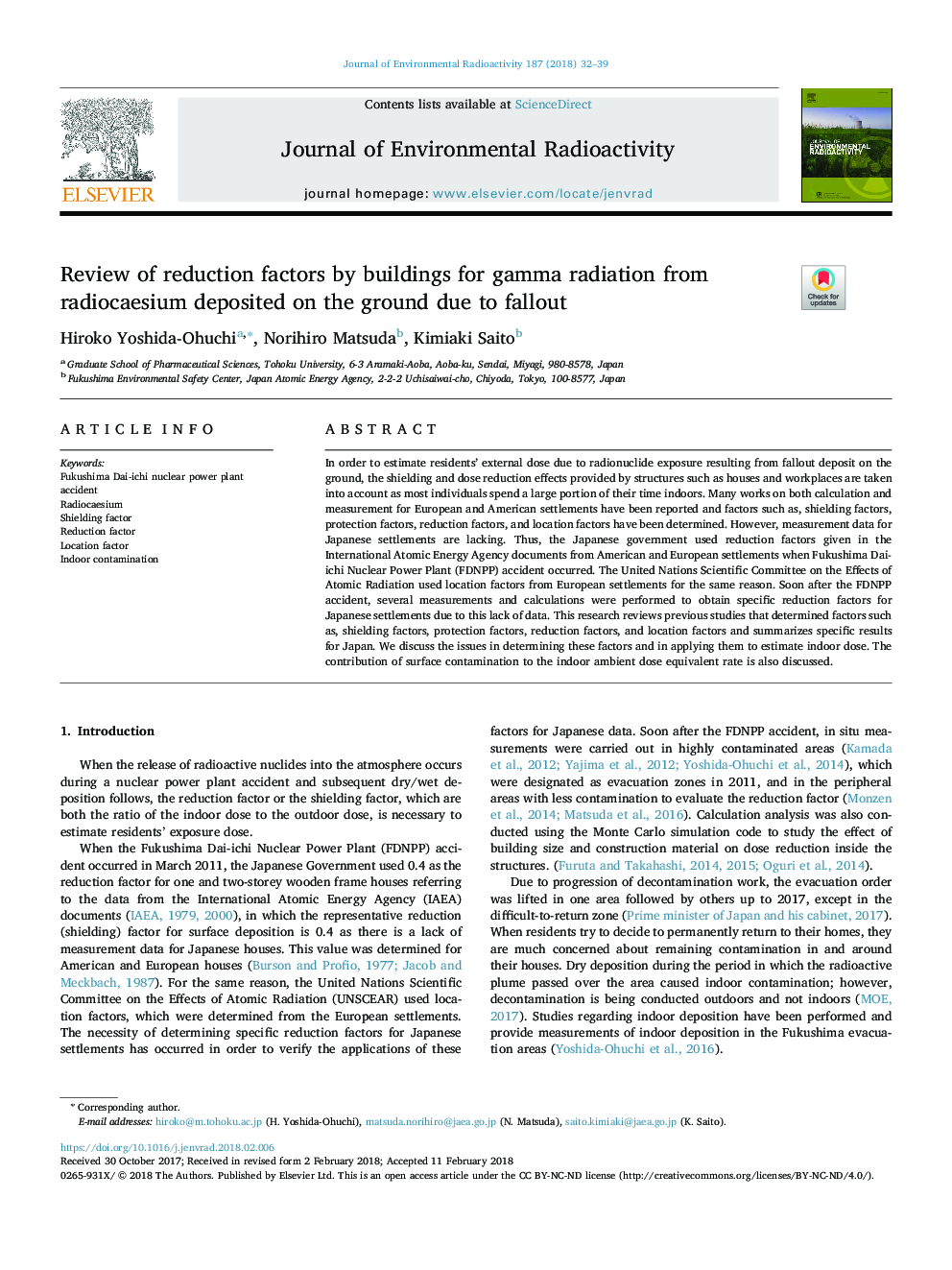| Article ID | Journal | Published Year | Pages | File Type |
|---|---|---|---|---|
| 8080598 | Journal of Environmental Radioactivity | 2018 | 8 Pages |
Abstract
In order to estimate residents' external dose due to radionuclide exposure resulting from fallout deposit on the ground, the shielding and dose reduction effects provided by structures such as houses and workplaces are taken into account as most individuals spend a large portion of their time indoors. Many works on both calculation and measurement for European and American settlements have been reported and factors such as, shielding factors, protection factors, reduction factors, and location factors have been determined. However, measurement data for Japanese settlements are lacking. Thus, the Japanese government used reduction factors given in the International Atomic Energy Agency documents from American and European settlements when Fukushima Dai-ichi Nuclear Power Plant (FDNPP) accident occurred. The United Nations Scientific Committee on the Effects of Atomic Radiation used location factors from European settlements for the same reason. Soon after the FDNPP accident, several measurements and calculations were performed to obtain specific reduction factors for Japanese settlements due to this lack of data. This research reviews previous studies that determined factors such as, shielding factors, protection factors, reduction factors, and location factors and summarizes specific results for Japan. We discuss the issues in determining these factors and in applying them to estimate indoor dose. The contribution of surface contamination to the indoor ambient dose equivalent rate is also discussed.
Keywords
Related Topics
Physical Sciences and Engineering
Energy
Nuclear Energy and Engineering
Authors
Hiroko Yoshida-Ohuchi, Norihiro Matsuda, Kimiaki Saito,
